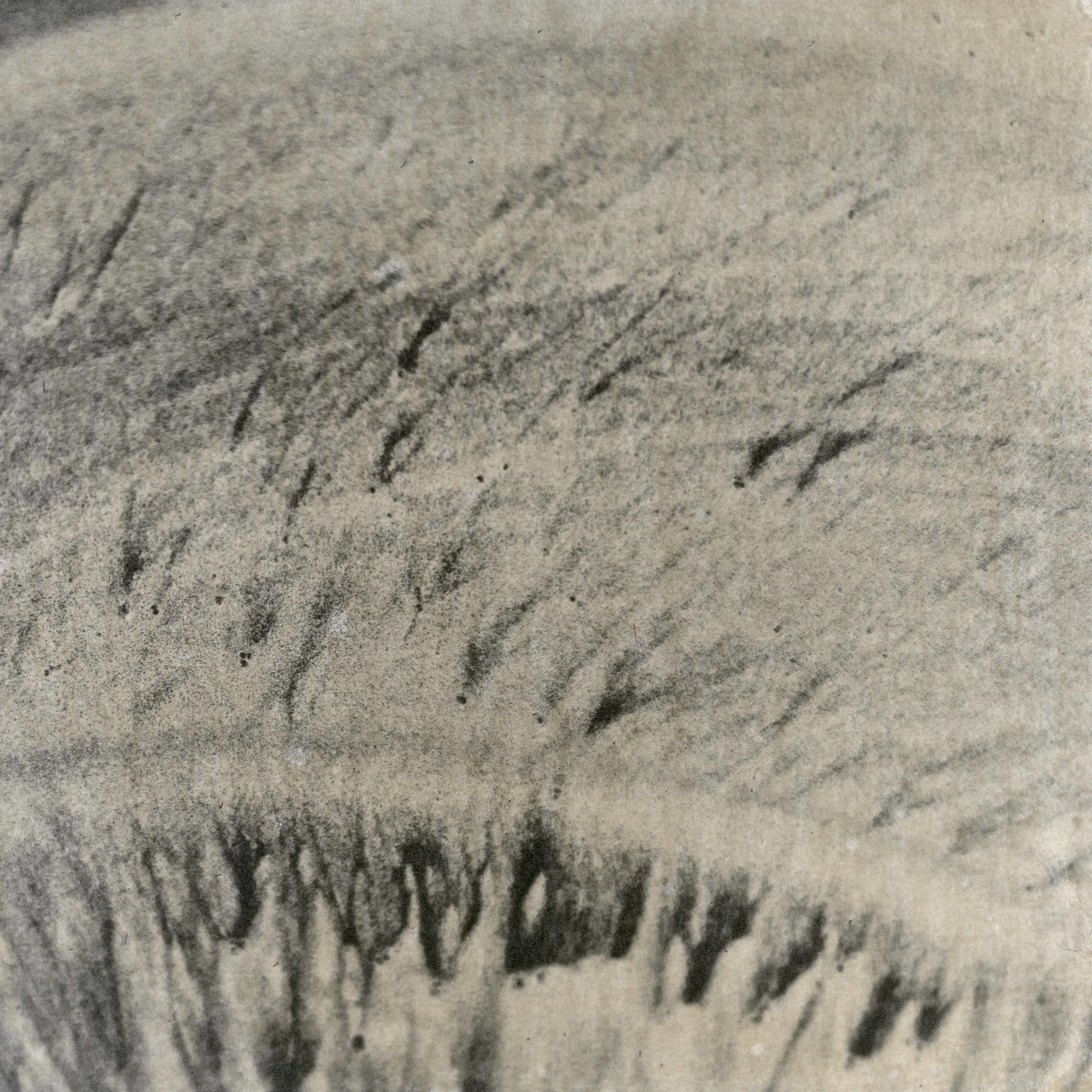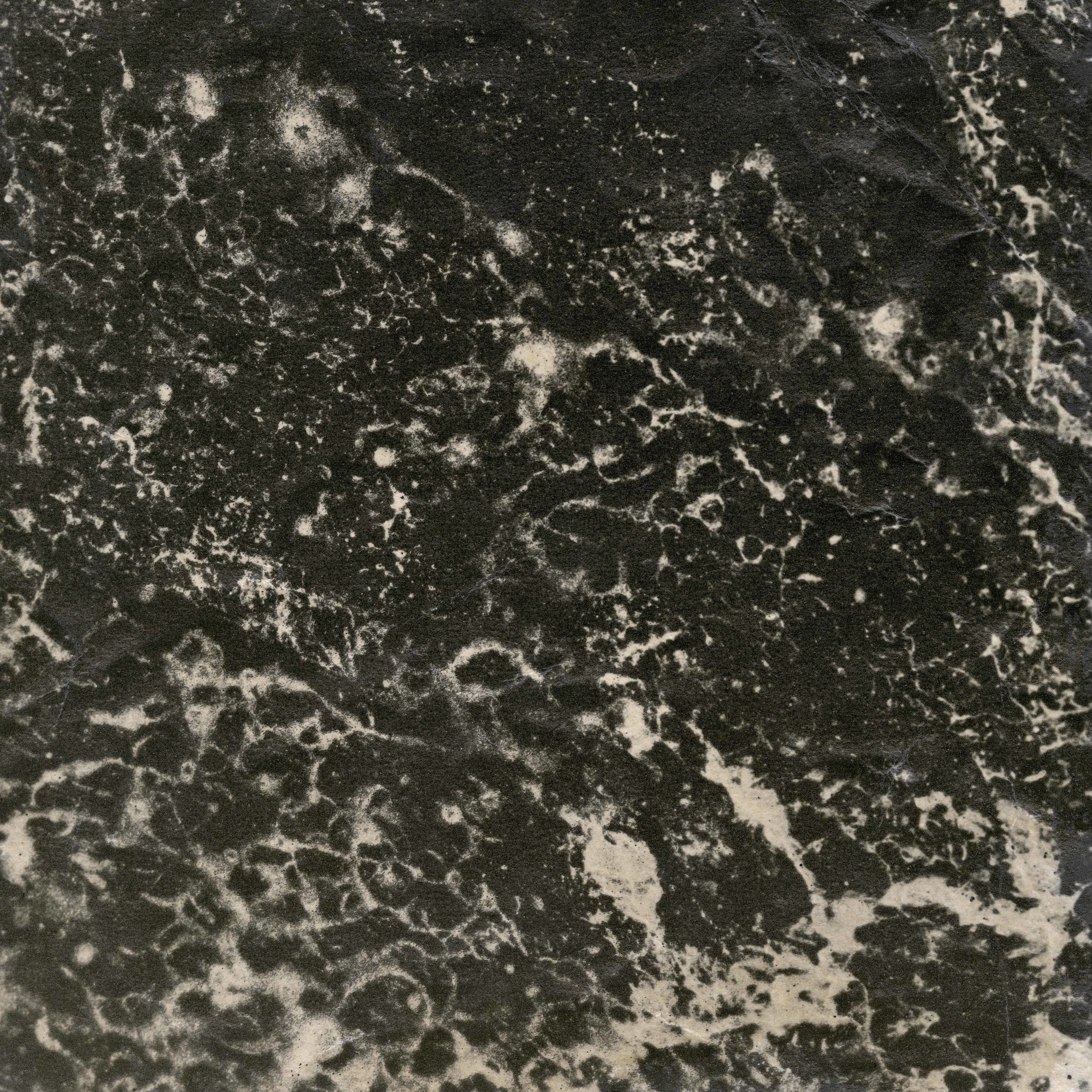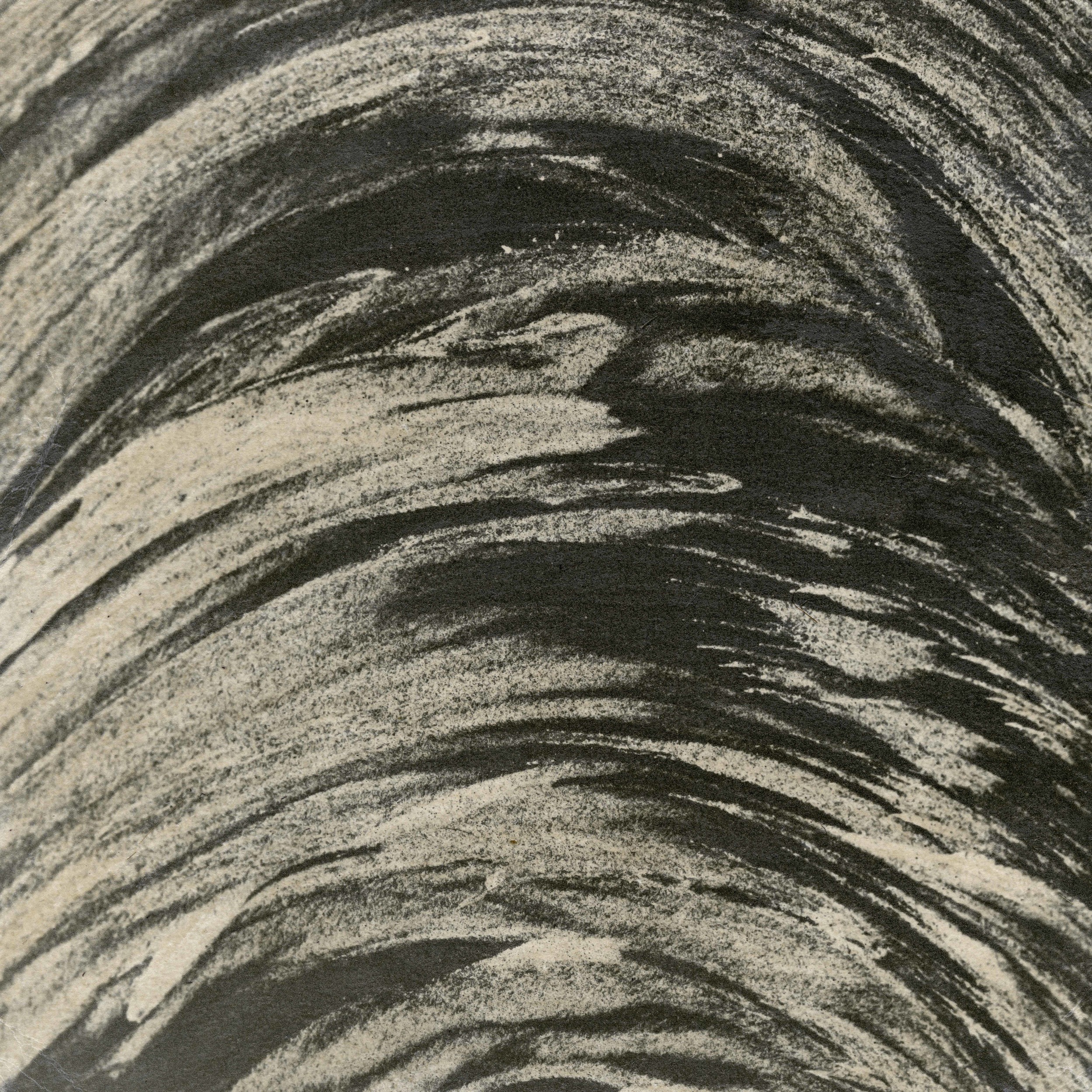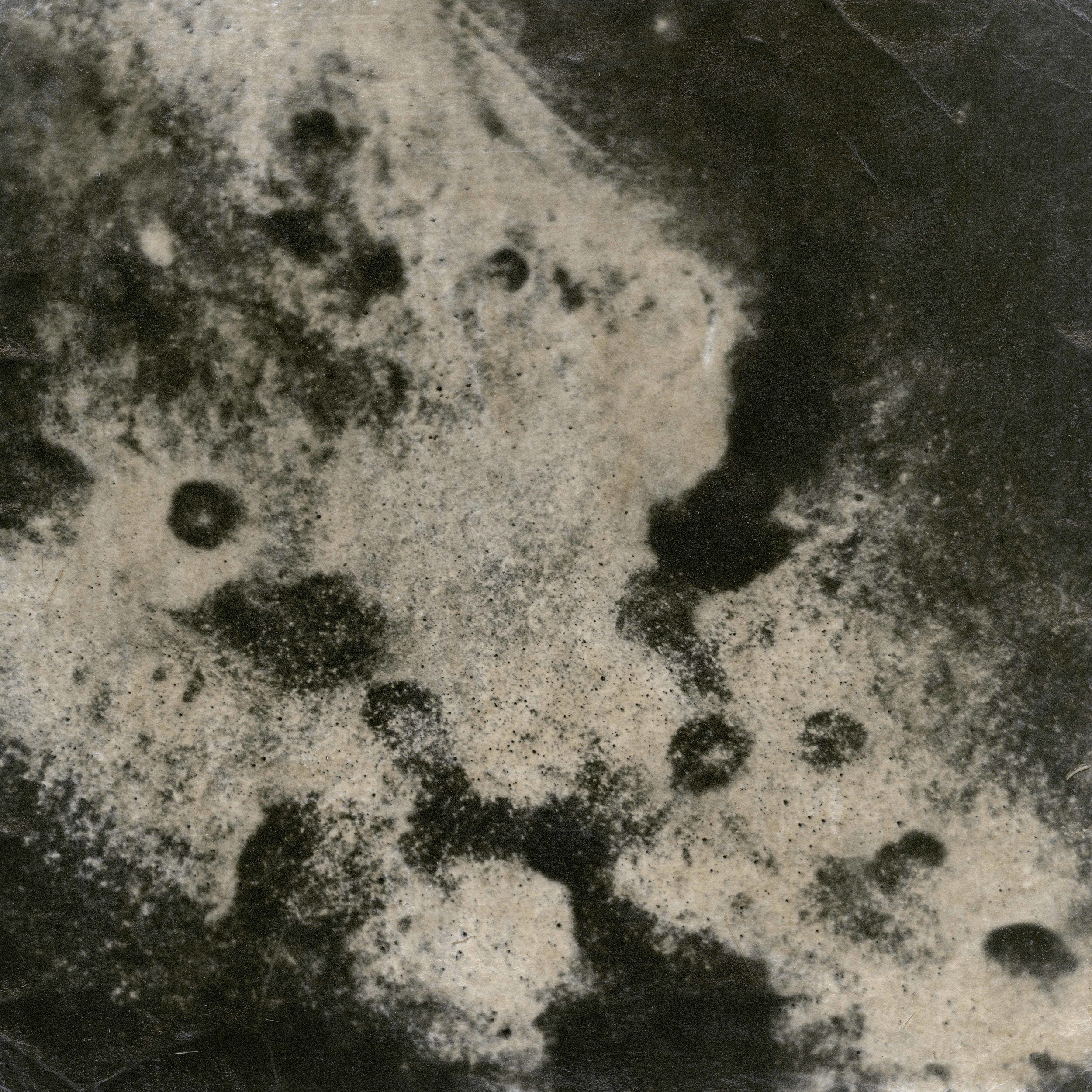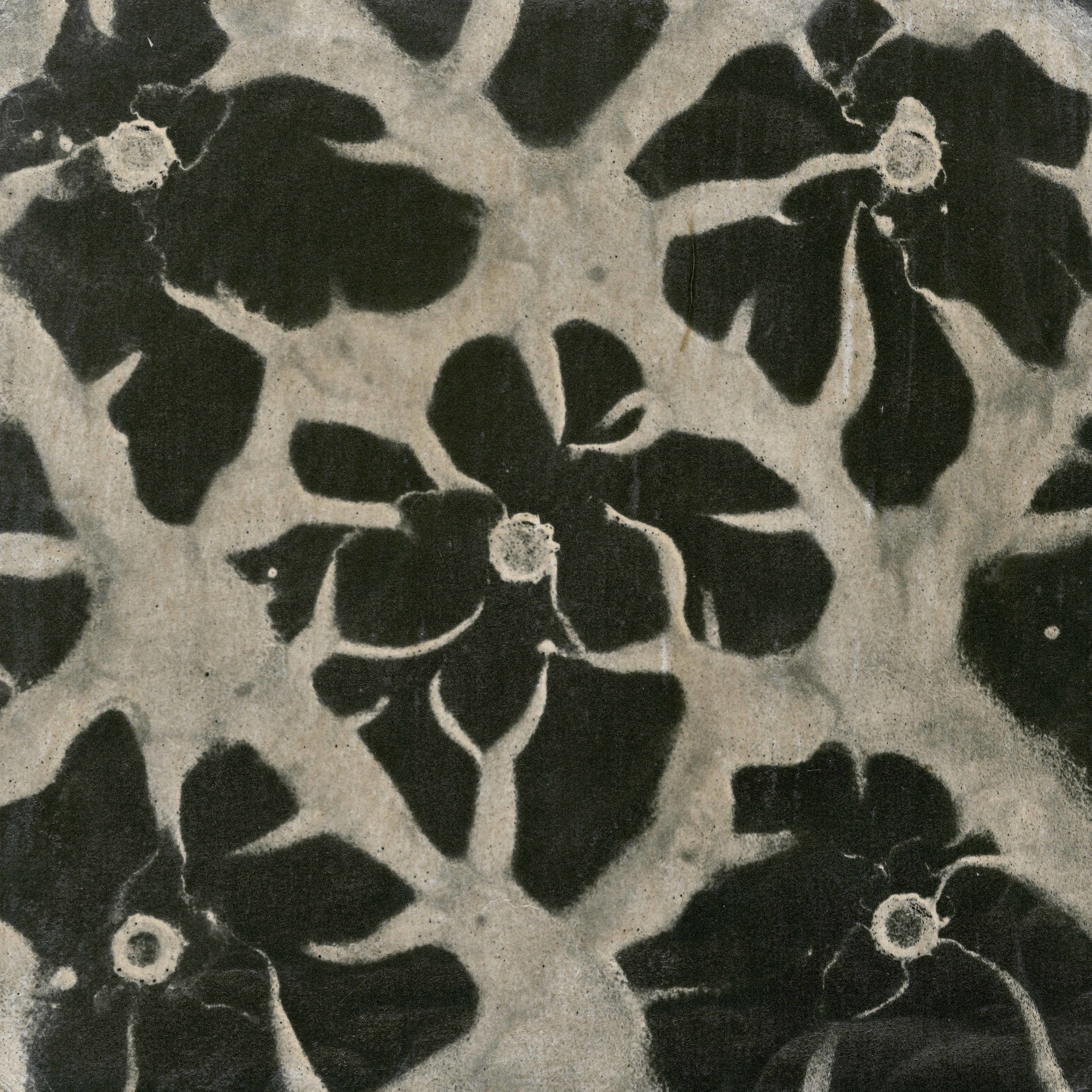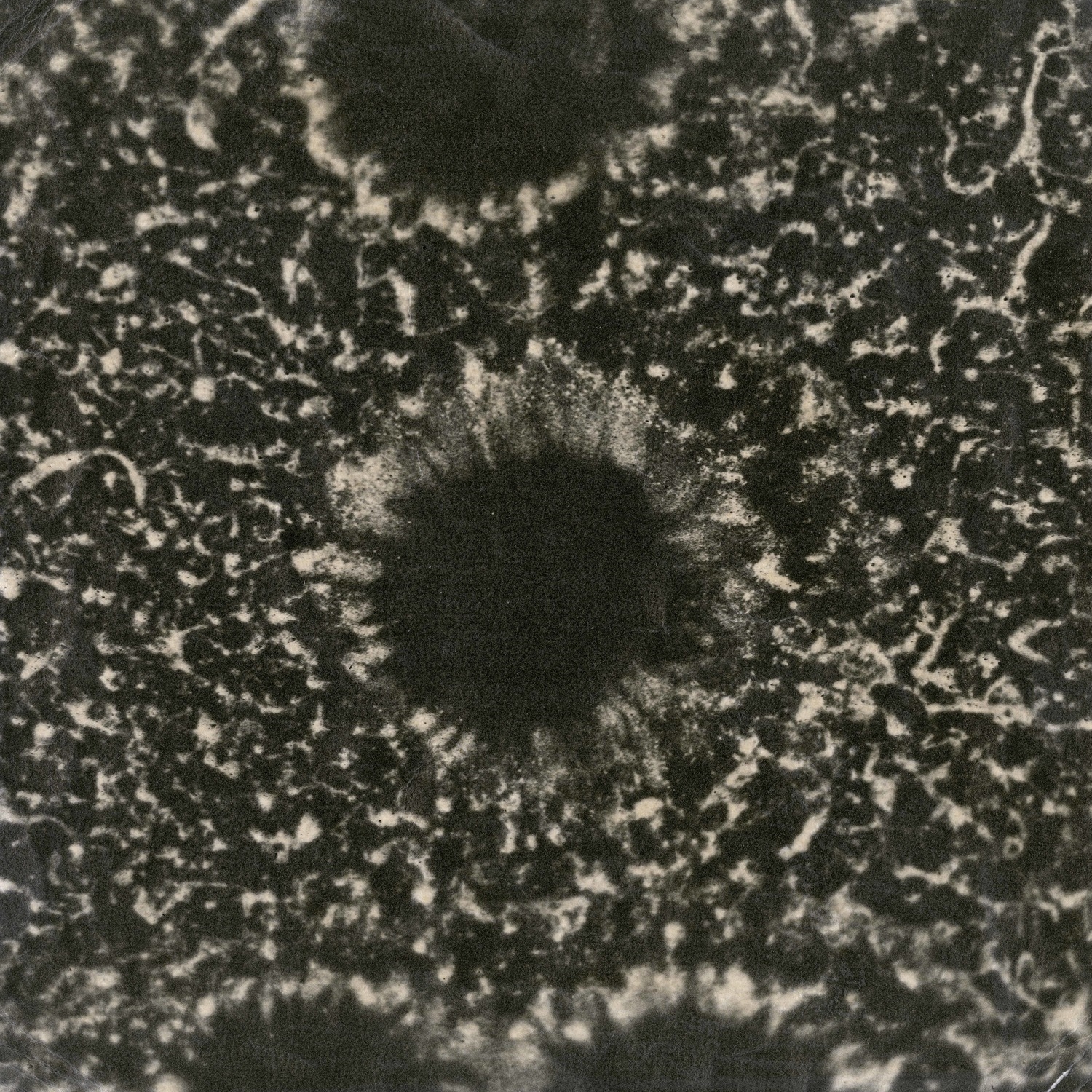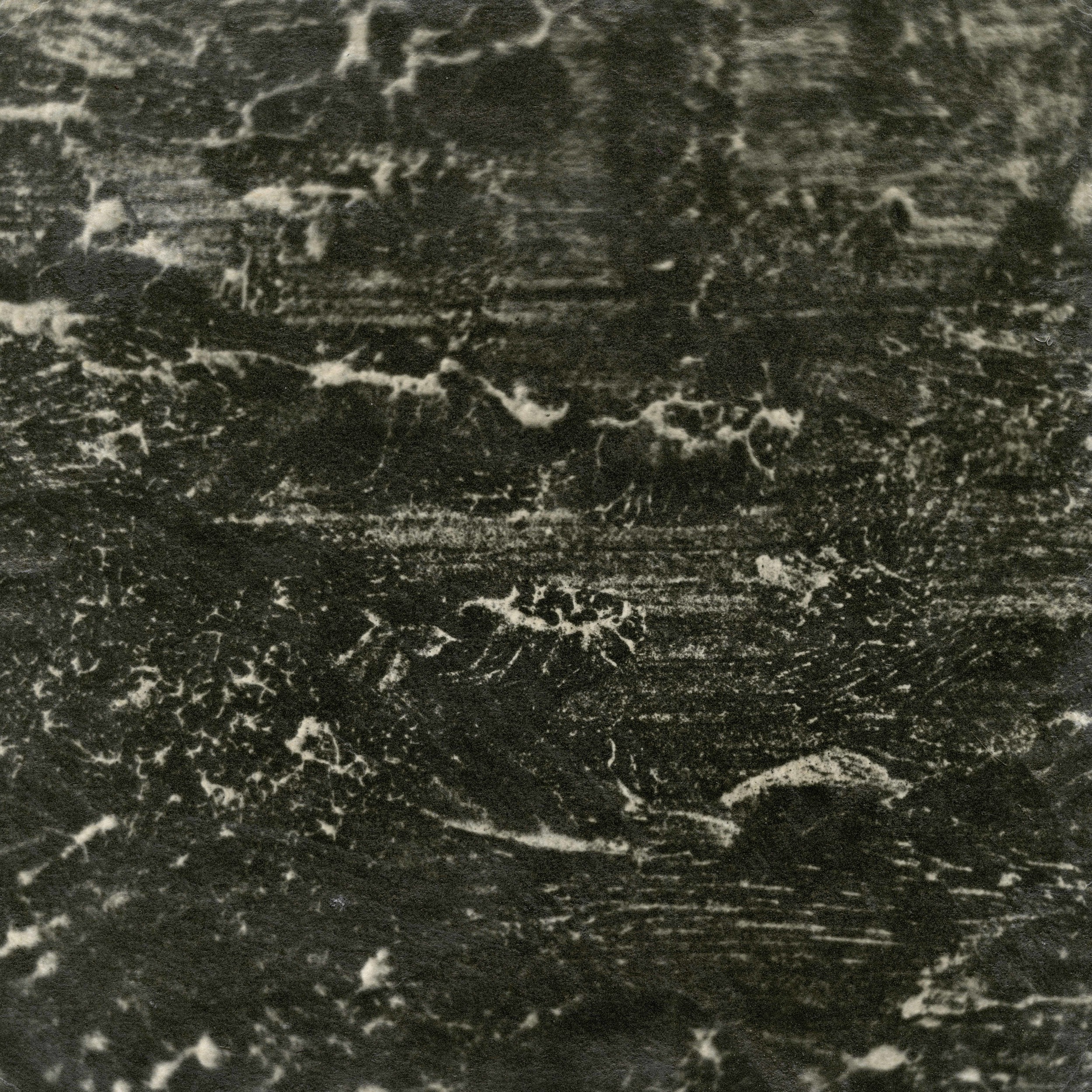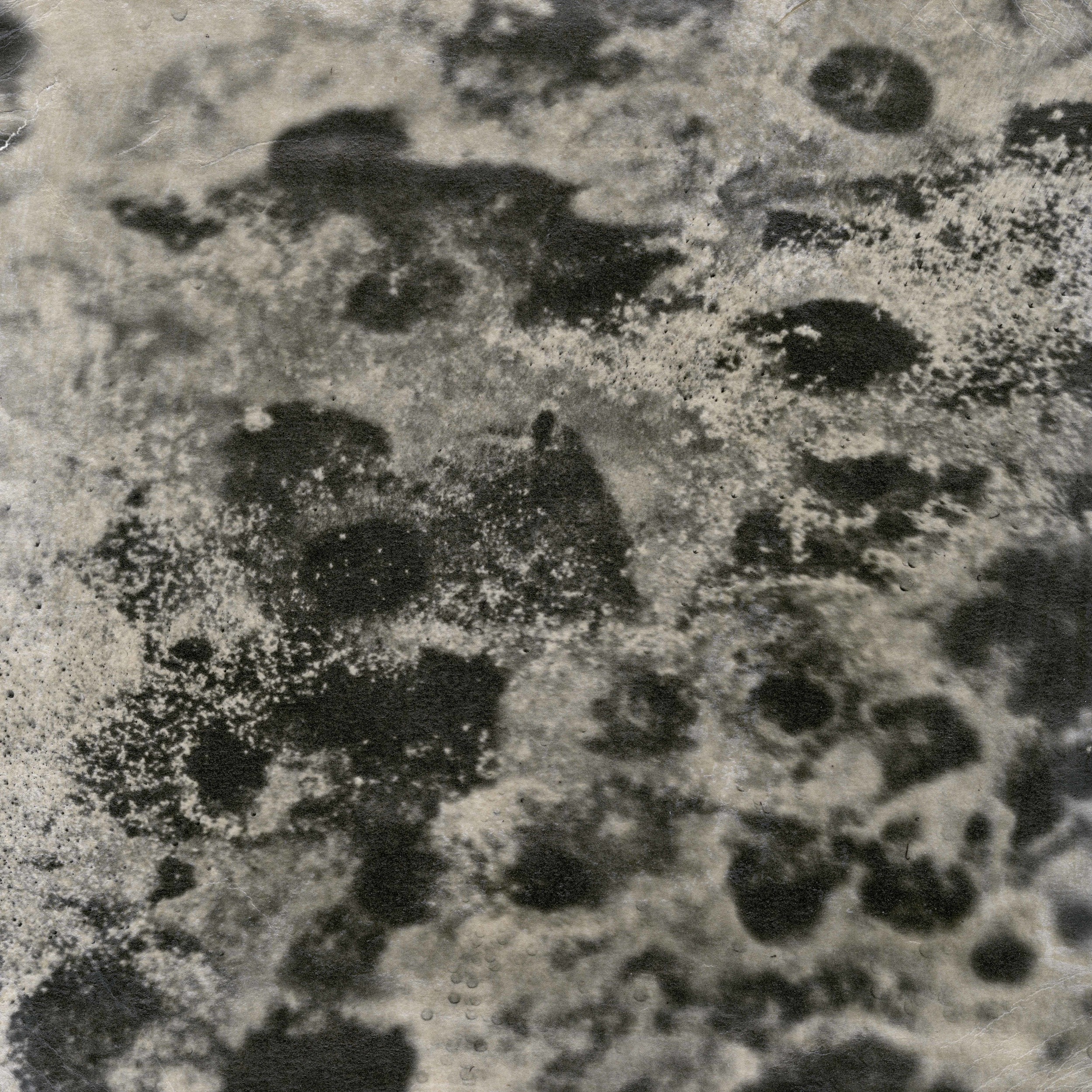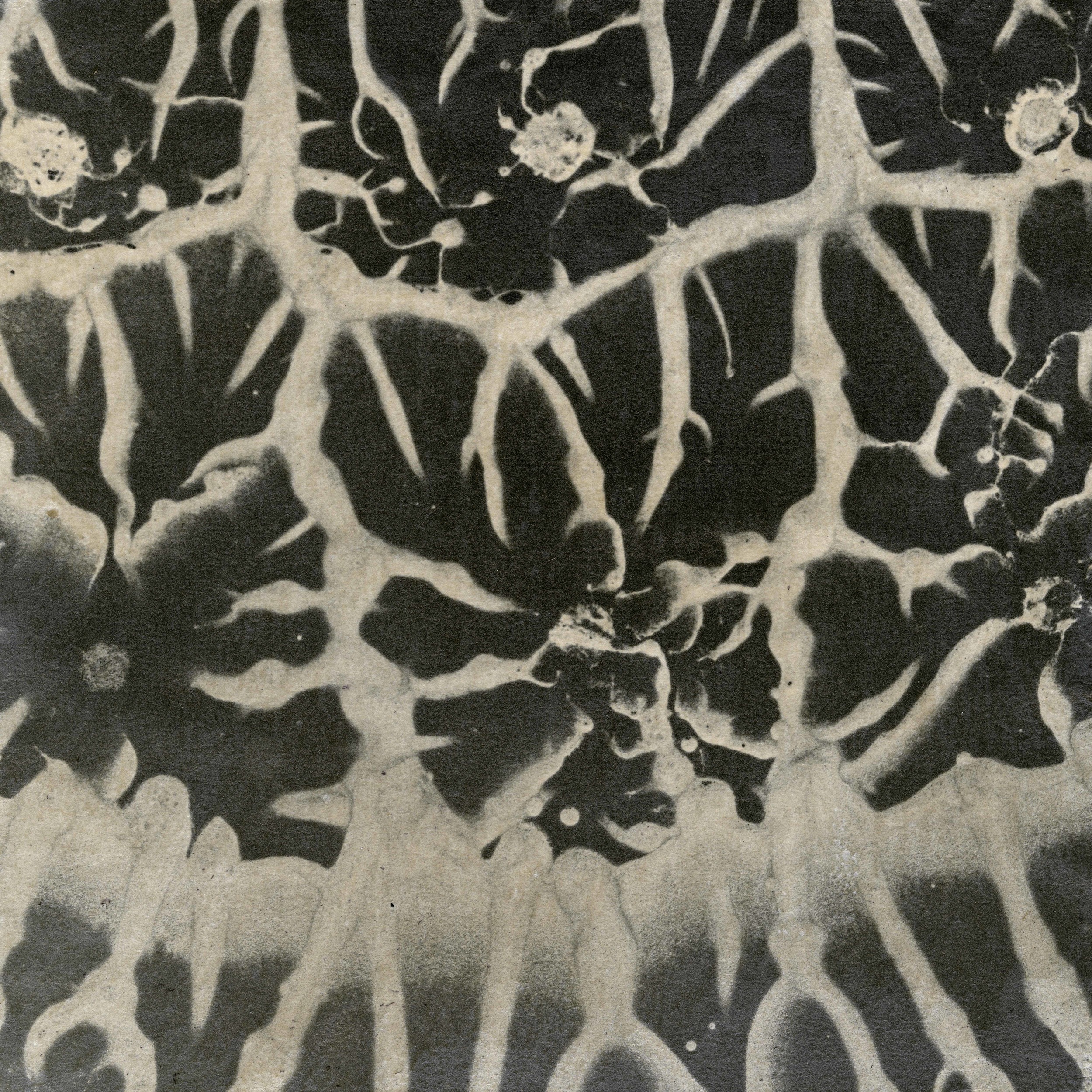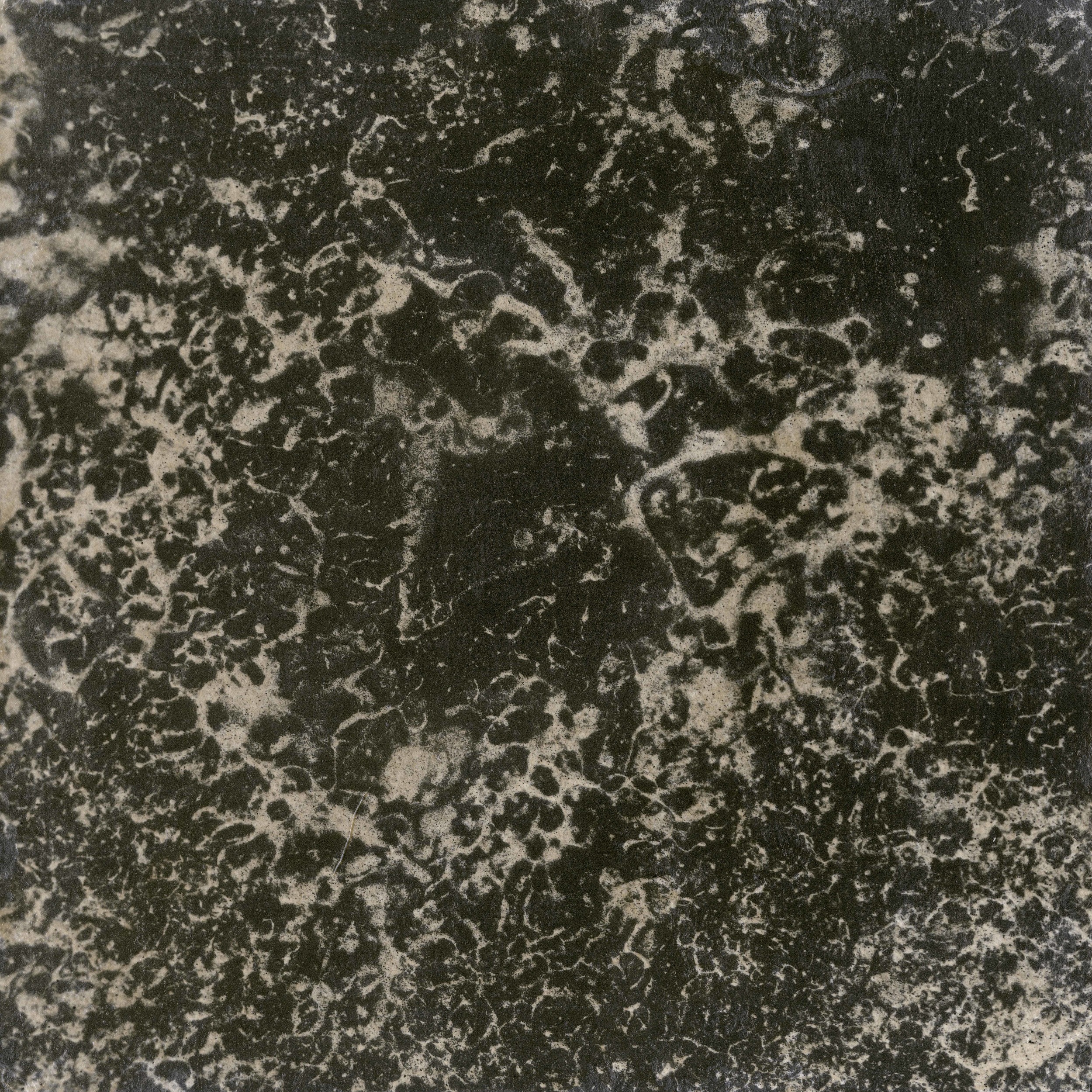Alchemic Record studies an integral preliminary step in the delicate process of lithography.
Lithographic limestones are fine-grain stones bearing natural homogeneous properties that are ideal for engravings and image reproductions. A successful lithographic print requires a clean, grease-free stone surface to etch an image on. These stones must first be ground completely smooth to erase and level any prior images or imperfections. Initially, the limestone is doused with water and a coarse carborundum grit, which is a silicon carbide abrasive that comes in a variety of grain sizes, similar to sandpaper. A hand-turned levigator is then used to agitate the surface of the stone in conjunction with the grit, eventually cleansing the surface in preparation for etching.
This series of pictures examine the topographical manifestations that are created within the process of graining a lithographic limestone. Before an image is ever etched, the steps to prepare a stone reveal molecular imagery in conversation with the fine properties of the limestone itself.
Each of these prints is coated with limestone sediment and grit collected during the graining process, and sealed with gum arabic, which is used on active lithographic stones to protect and preserve the etching.
